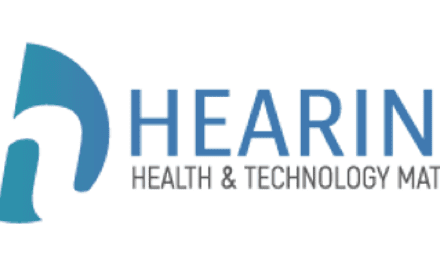Final Word | June 2019 Hearing Review
In a busy office dealing with hearing and hearing-related products, troubleshooting occupies much of our time. The other day, a woman made an appointment with a complaint of not hearing well on one side. She offered concerns that she did not know if it was the hearing aid, her ear, or her imagination, but it didn’t seem like she could hear as well as she had in the past from her left ear.
The first rule of troubleshooting an inanimate device is to do a good visual inspection. Dealing with humans, we have a few additional options. In this case I asked the woman to expand on her perception of the issue. How long ago did the problem become apparent, and was it a gradual onset or a sudden change? It turned out it was a recent problem, and since she was a walk-in visitor added to my already busy schedule, I opted for shortcuts to get to the bottom of her problem as soon as possible. The hearing aid produced audible feedback in the hand, and otoscopy revealed no cerumen occlusion or other obvious abnormalities.
I had evaluated her hearing a few months ago. Suspecting a change in her hearing, I decided that a quick pure-tone air conduction threshold search would be appropriate at this point. It turned out that her thresholds were the same or better in the affected ear when compared to the most recent audiogram.
At this point, I turned back to the hearing aid for a more thorough look and noted that the wax trap was partially occluded. Cleaning up the hearing aid and replacing the wax trap took care of the problem with no further delays.
There were no major negative consequences to my missing the easy solution at the initial assessment, but it caused me to reflect upon my approach and how it took an extra 15 or 20 minutes to get to the right answer. Being comprehensive in our approach to care is often at odds with being efficient. If I made several efficiency errors in a day, it could create bigger problems.
At a session of the recent American Academy of Audiology convention, Jay Hall, PhD, opined that we should be more efficient in our approach that follows decades of tradition rather than doing the steps that need to be done to get the information we need on the day of the visit. He questioned if word recognition testing in quiet and other traditional parts of the standard of care assessment were necessary for patients that had no reason for medical referral and needed hearing aids. The context of the session was billing and Medicare, but it caused me to think more about efficiency and patient care. The troubleshooting problem I encountered was simply another example of how I might gain efficiencies by taking a good look at how I am approaching problems that patients bring in for solutions.
I suggest we start by looking at how we describe the results of assessment we perform on patients who come in looking for opinions on what to do about the hearing difficulties they are experiencing. I don’t drag out an audiogram and orient them to the figures unless they indicate that they have some familiarity with the nomenclature. Instead, I offer a verbal description of the practical problems that I expect they are having as a result of the hearing loss. My description for a typical sloping age-related hearing loss with a pure-tone average of about 40 dB HL might include the following: “…your test results indicate that you may be aware of normal conversational speech, but you may not receive enough information for you to understand what is being said without visual input and a great deal of listening effort.” The reference anchor is normal conversation, and the topics of visual input and listening effort are introduced into the conversation. The problem is addressed directly without taking the time to define terms and symbols, and leads directly into a rehabilitative discussion.
The Final Word? A good look at traditional practices and our own habitual approaches to patients is a healthy exercise for any professional. Smart, time-saving approaches to patient care must be efficient and not sacrifice the elements of good practice, but we shouldn’t doggedly stick to a prescribed routine that calls for rote completion of procedures when they yield little of the information needed to manage patients’ needs. We may need to redefine some elements of “Best Practice” as we go forward, and that will be healthy for everyone.
About the author: Dennis Van Vliet, AuD, is Senior Clinical Educator for the Bloom Hearing Specialist Network, based in Miami, Florida. He provides clinical services in Dana Point, Calif, and has been a prominent clinician, educator, and leader in the hearing healthcare field for over 40 years. His professional experience includes working as an educational audiologist, a private-practice owner, VP of audiology for a large dispensing network, and senior director for a major hearing aid manufacturer. As a columnist, his work spans three decades.
Correspondence can be addressed to HR or: [email protected]
Citation for this article: Van Vliet D. Re-evaluating best practices for patient needs. Hearing Review. 2019;26(6)[Jun]:34.






